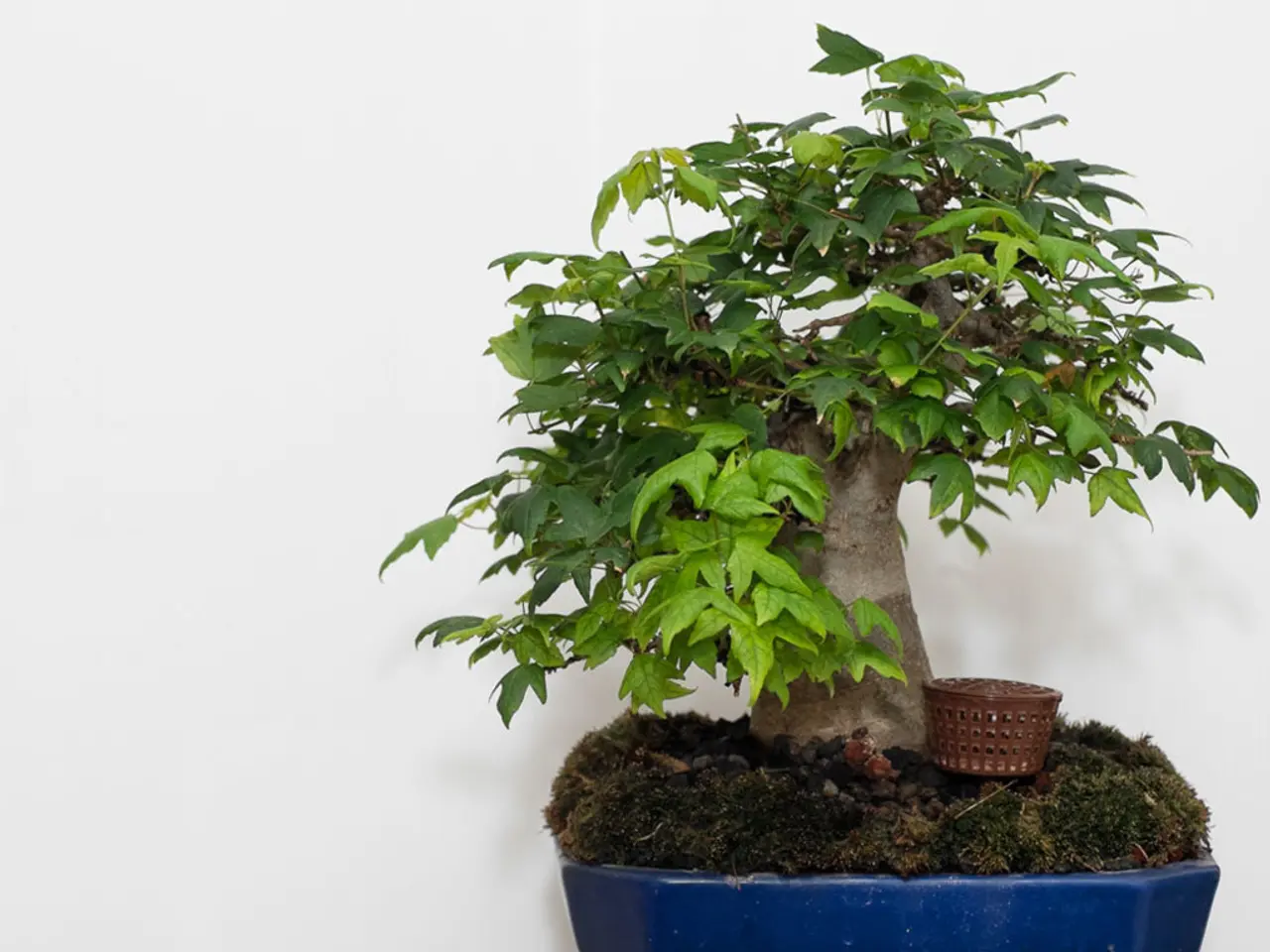Sustainable Bonsai Maintenance: Embracing Eco-Friendly Methods and Green Options
In the realm of horticulture, bonsai cultivation stands as a testament to the harmonious coexistence of human ingenuity and nature's beauty. Sustainable bonsai maintenance, in particular, embodies an eco-friendly approach that promotes harmony with nature, transcending aesthetics to become a declaration of environmental stewardship.
Sustainable bonsai care involves adopting a nuanced understanding of a tree's specific needs to promote healthy growth and minimise environmental impact. This mindful approach emphasises efficient watering—watering only when the topsoil is dry—and use of well-draining, appropriate soil, which helps conserve water and avoid overuse of fertilizers or pesticides.
Incorporating natural fertilizers like compost tea or worm castings enriches the soil and reduces reliance on synthetic chemicals. On the other hand, using recycled paper or cardboard as mulch for bonsai can be eco-friendly, but acidity and decomposition may affect soil pH and nutrient availability.
Bonsai cultivation supports sustainability by encouraging the reuse and shaping of small trees rather than planting large ones, helping conserve space and plant materials. Bonsai growing is often practiced with attention to natural light, humidity, and minimal dependence on artificial inputs, aligning with eco-friendly landscaping principles.
Beyond ecological benefits, the practices involved enhance mindfulness and reduce stress, fostering an environmentally conscious mindset and lifestyle by connecting people emotionally and practically to plants and nature, even in urban settings.
Every decision in bonsai care has a ripple effect on the environment, making it crucial to consider the long-term impact of our actions. For instance, pruning frequency depends on species, growth rate, and desired shape, with a general rule of pruning every 4-6 weeks during the growing season. Sustainable bonsai watering techniques include the 'water-drop' method to avoid overwatering.
During extreme weather conditions, bringing bonsai trees indoors can protect them from damage. Interestingly, some bonsai species can tolerate low natural light conditions, such as Chinese Elm, Ficus, or Serissa.
In conclusion, adopting sustainable practices in bonsai cultivation contributes to a healthier planet. By embracing these eco-friendly methods, we not only cultivate beautiful miniature landscapes but also demonstrate our commitment to a greener future, where human ingenuity and natural wonder converge in perfect balance.
In the context of bonsai cultivation, environmental-science principles are applied through sustainable practices such as efficient watering and use of appropriate soil, promoting a minimal impact on the environment and encouraging eco-friendly living. The use of natural fertilizers enriches soil and reduces reliance on synthetic chemicals, creating a more sustainable home-and-garden environment. Bonsai gardens also serve as a testament to sustainable-living by supporting the conservation of space and plant materials through the reuse and shaping of small trees.




